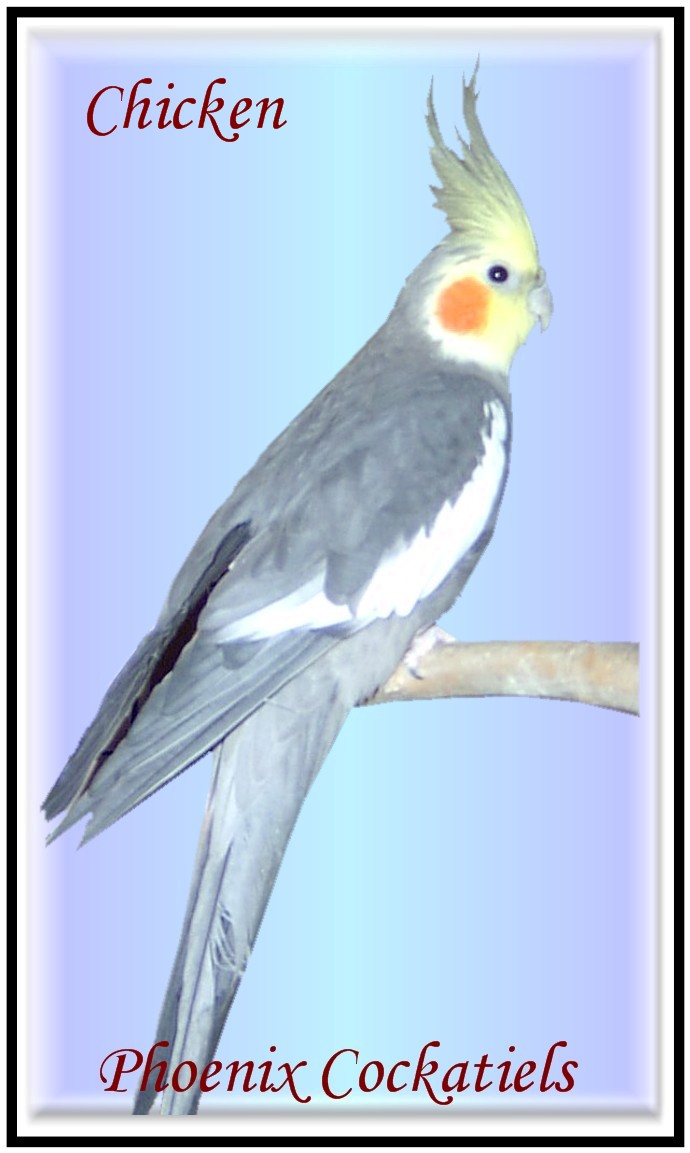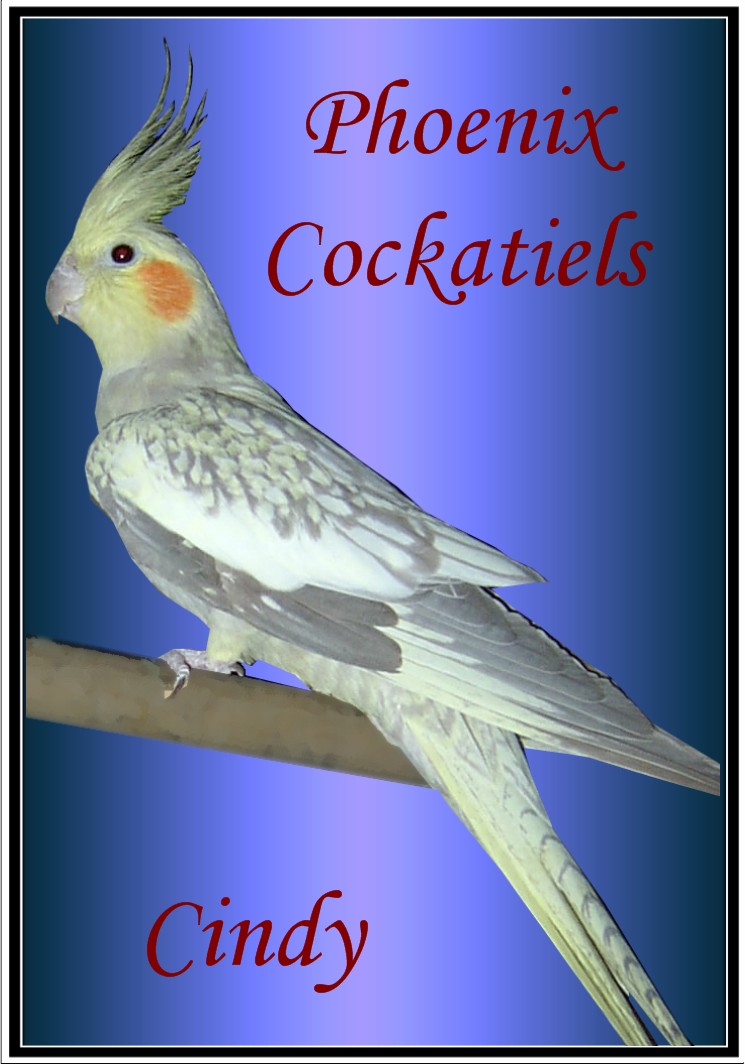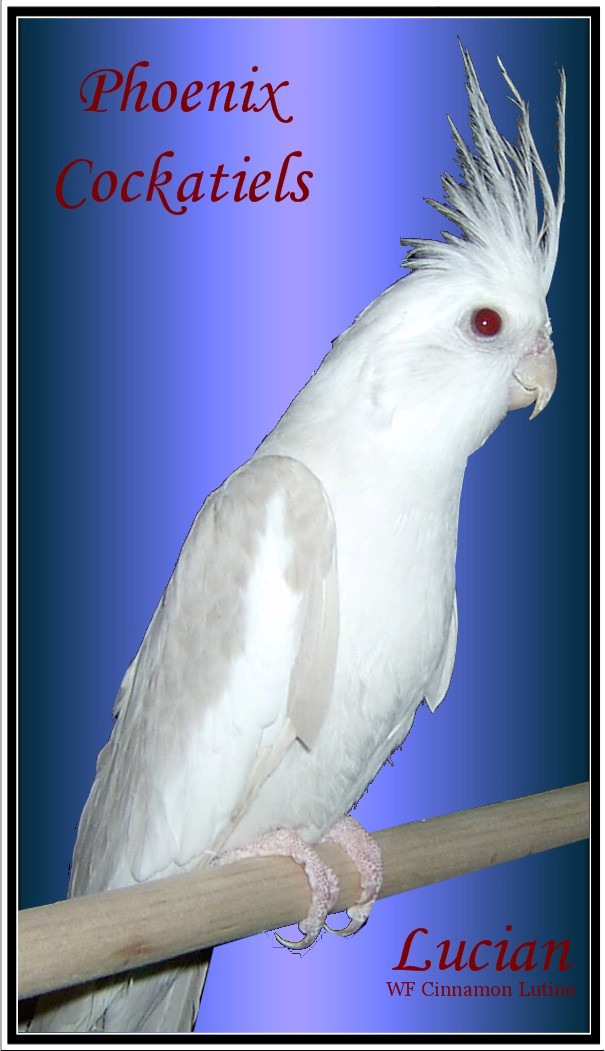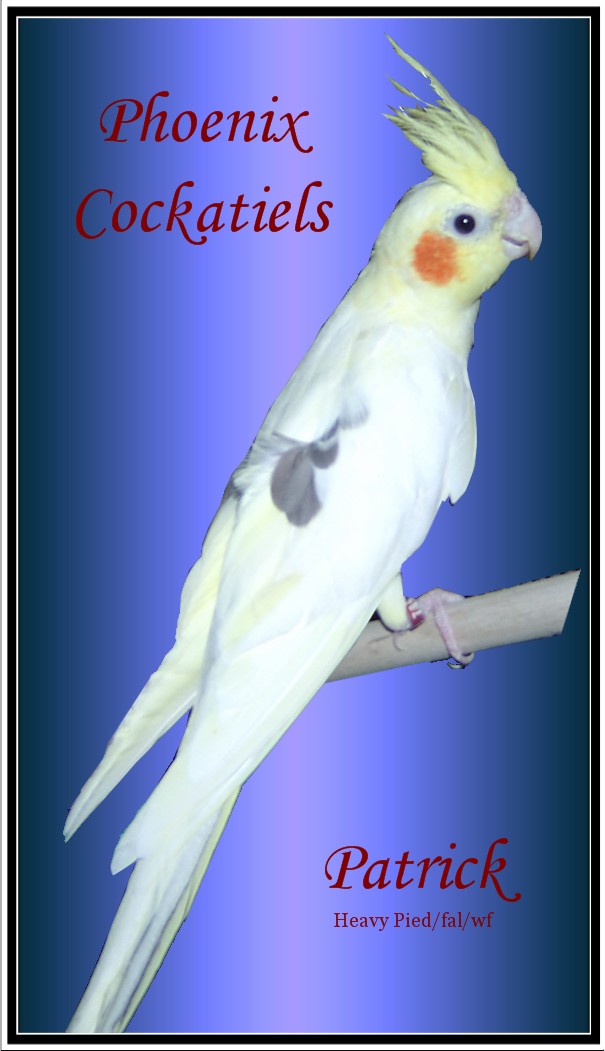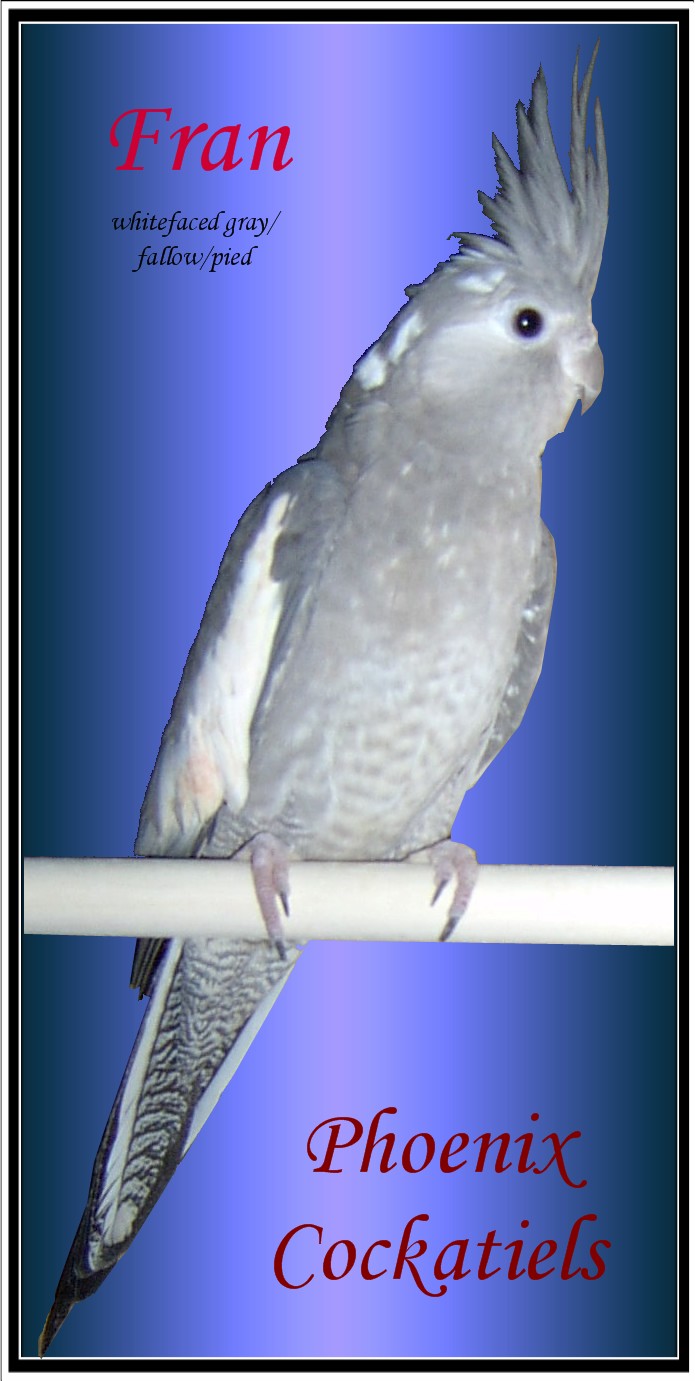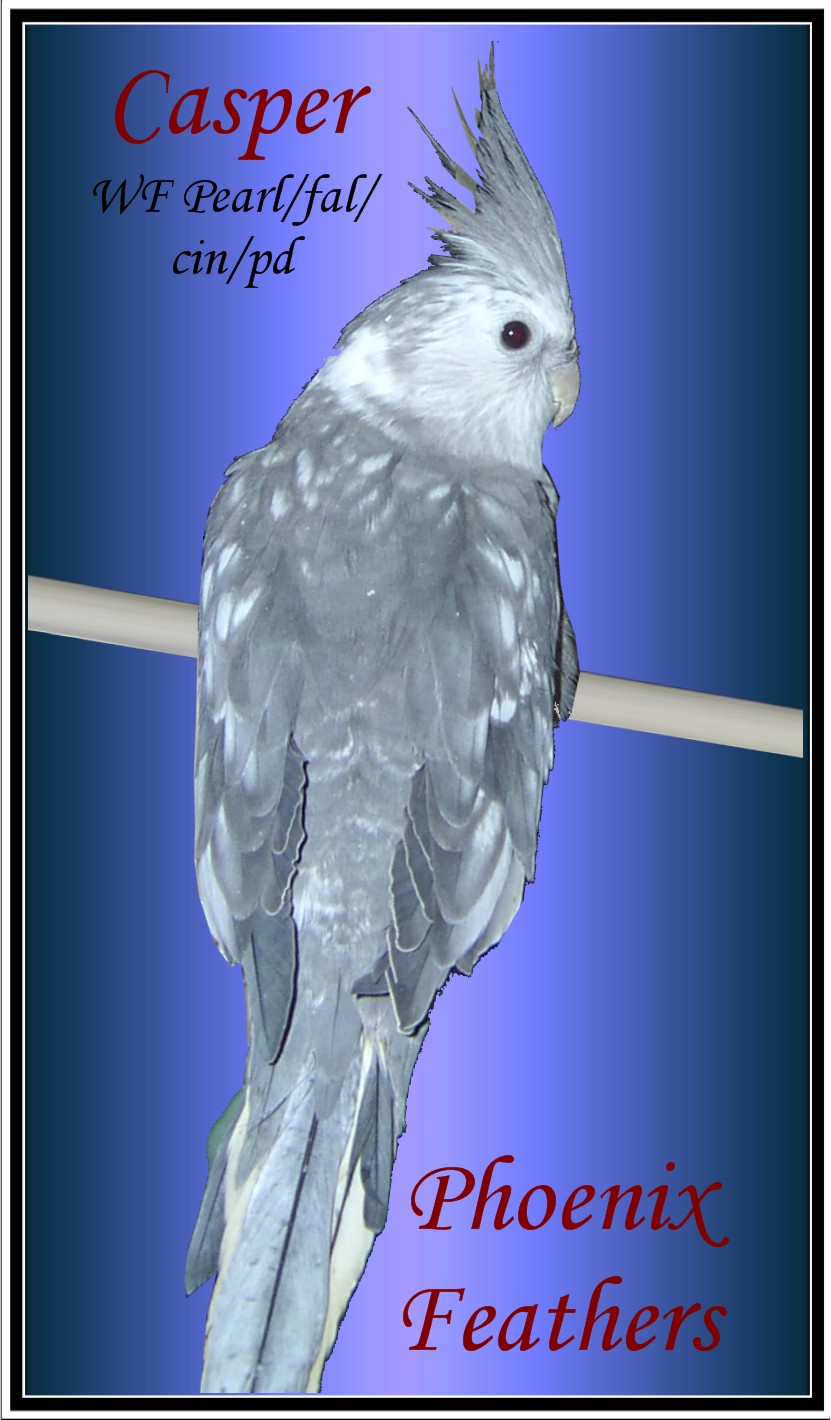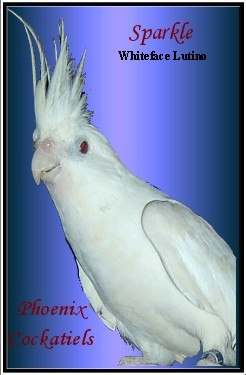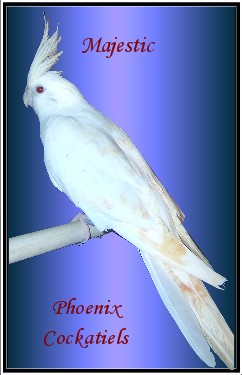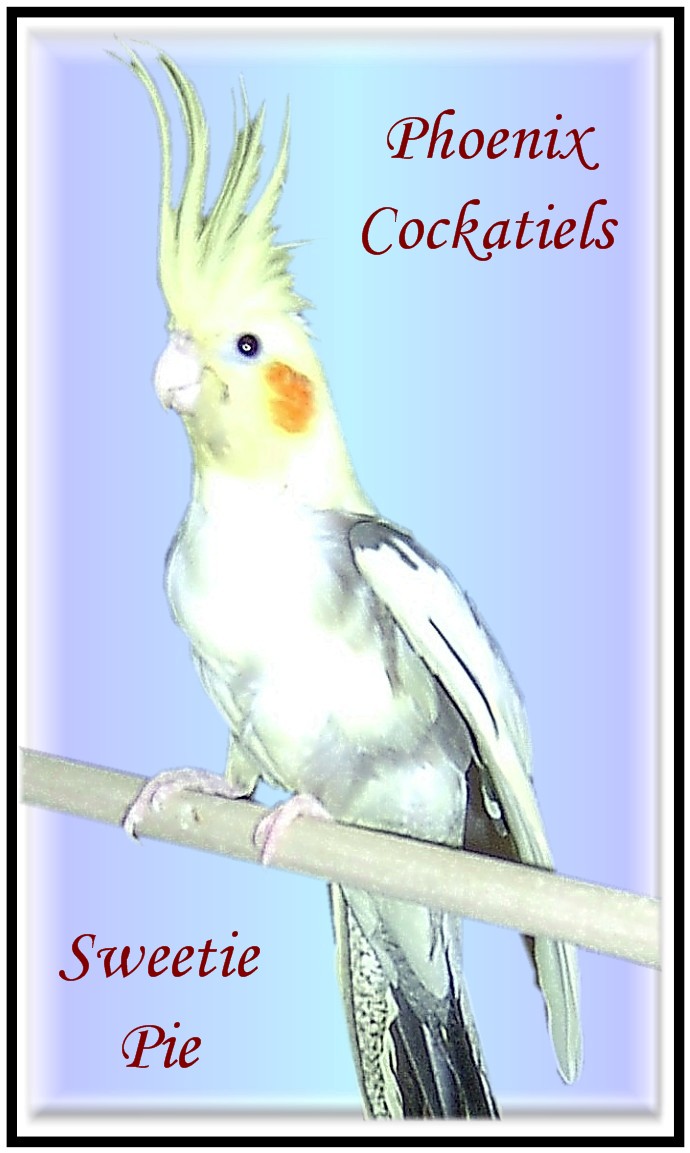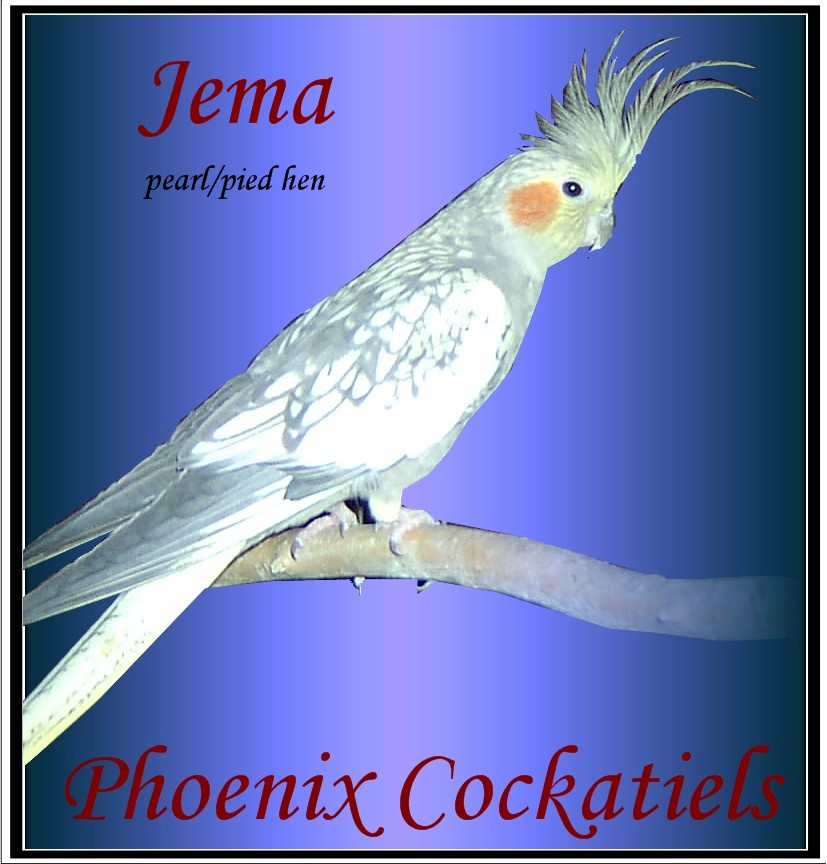COCKATIEL COLOR GENETICS
A guide to the functional basics.
DOMINANT- an inherited color that requires only one gene to be "visual". These colors are never carried as splits. If they are not visual they are not present and cannot be passed on to young. (unless the color is hidden by another such as pied. A clear pied might mask any color including dominant ones. For instance, a Dominant Silver Clear Pied would still be a dominant silver even though you may not see the color. This could be determined through pedigree information or test breeding.
Dominant Yellow Cheek (DYC)
Dominant Silver (DS)
Gray ( Normal Wild Color)
RECESSIVE - an inherited color that requires two genes (one from each parent) to be visual. These colors can be carried as a split (non visual single gene) and passed on to young.
Pied (including light pied, heavy pied and clear pied)
Recessive Silver (RS)
Fallow
Whiteface
Pastelface (see notes below regarding pastelface)
Emerald/Olive/Suffused Silver/Spangled
SEX LINKED - an inherited recessive color that is attached to the X chromosome. In cockatiels, the male has two X Chromosomes and the female has only one. For all sex linked colors, a male needs two genes to be visual to the color. A females will be visual with only one of the genes. These colors can only be carried as splits on males, never on females. If a female carries one sex linked gene then she will be visual in that color. The only exception is in the case masking colors. When breeding the sex linked colors it's important to remember that 1. all young from a visual male will recieve one gene for the color (all female young will be visual) and 2. visual females will pass on the gene for the sex linked color to all male young, making the young males split to the color if they are not visual. A female can never pass a sex linked color to female young, only to males because it is carried on the male chromosone.
Lutino
Cinnamon
Pearl
Sex Linked Yellow Cheek (SLYC)
Pearling on males - Most pearl male cockatiels will lose their pearling after the first or second adult molt. This does not change their ability to produce the color but can make it more difficult to accurately identify the color of an unknown adult male.
Masking colors - It should be noted that some colors can hide or mask others without being dominant over them. For instance clear pieds and lutino. It is possible for either of these colors to obscure what else might be visible on a specific bird.
Pastelface - Although a simple reccessive color, pastelface will act dominant over the whiteface gene. The two take up the same places on the chromosone and anytime they both occur in one bird, the bird will actually be split to pastelface and split to whiteface but will be visual pastelface.
"Albino" - The color that is commonly and mistakenly called albino is actually a combination of two mutations. Two recessive whiteface genes will come together to eliminate the yellow and orange pigments on a bird. While two sex linked lutino genes (only one needed in hens) will elimnate the gray color from a bird. With both gray and yellow-orange removed, the resulting appearance is a pure white bird with the red eyes that go with lutino birds.
more coming soon
